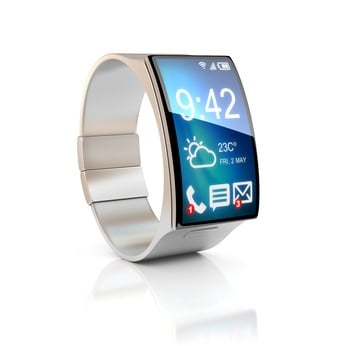
Dell Mobility Enterprise Solutions Specialist Jason Moody spoke at Whitehat Virtual Technologies annual Virtualization and Mobility Expo (VMXpo) in Austin, TX last year. This is the article he wrote following VMXpo 2014:
I spoke at Whitehat Virtual Technologies in Austin this week to a group of IT professionals concerned with meeting compliance standards. They have been focused on implementing new, and sometimes aggressive, policies to help control data leakage that has arisen with BYOD. Not only are they seeing many varieties of devices in their offices, some of those devices are the newest on the market; they have amazing processing power, huge storage capabilities and many pre-loaded apps.
After talking about mobile devices, the conversation turned to wearable technologyand what to do about the next onslaught of devices. These devices will likely become very prevalent; one expert quoted in a Pewreport released in July 2014 noted that the 13 billion Internet-connected devices in 2013 will surge to 50 billion by 2020, including not just devices we know about now, but ones “of which we have not yet conceived.”
Wearable technology is just the beginning of what is to come. Currently, wearables are made for monitoring sporting activity and for giving users viewable access to alerts and information. They provide an excellent way to get information quickly.
When used for business purposes, the benefits of wearables can outweigh the concerns. These devices can enable employees to achieve fitness goals, which helps control healthcare costs. Wearables can also save users time by offering at-a-glance information to their mobile apps such as email, text, calendar and phone.
New wearables announcements seem to be coming out on a weekly basis; has your organization looked at these devices? Are you taking a proactive approach and inviting devices for testing? Or will you create a policy to try to stop devices from coming into your IT environment?
Here are some tips to help you make the decision about whether to allow wearables in your organization.
First, determine whether the device will be helpful. Does it add value to your employee’s job in some way? Does it make it easier to get work done?
Second, take time to understand the privacy concerns that some employees may have since these devices connect and collect data all the time. Will you be accessing their data, and if so, what kind, how much and when? Could their devices be confiscated? Be ready to talk to employees about it, and investigate policies that work for BYO wearables.
Third, talk to the stakeholders that helped build the BYOD policy with the understanding that these devices can be even more personal than mobile phones or tablets. What additional actions can you take toprotect employee privacy?
Fourth, learn what capabilities, if any, your organization’s enterprise mobility management solution has to allow data sync and wipe that wearable data if needed.
IT groups have the power to help businesses succeed, and sometimes that means inviting new technology that seems like it could be a threat to the security of your network and data. Only you will know if the benefits are worth the risk. By working with all the stakeholders in your environment, you can get the input you need to make the best decision for your organization and develop a plan to provide as much security as possible.
About Jason Moody:






Leave Comment